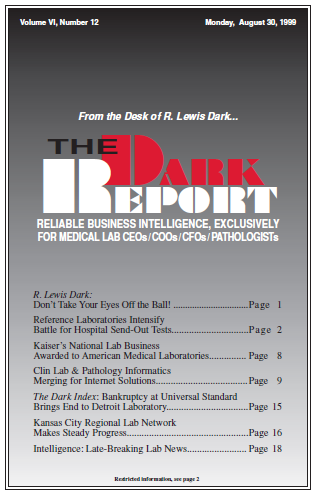CEO SUMMARY: Information is where both clinical laboratories and anatomic pathologists will continue to add value to healthcare in the future. At this year’s Executive War College in May, THE DARK REPORT asked several leading innovators in laboratory and pathology informatics to share their actual experience in funding and operating the earliest telemedicine and telepathology …
Clinical Lab and Pathology Informatics Merging For Internet Solutions Read More »
To access this post, you must purchase The Dark Report.


